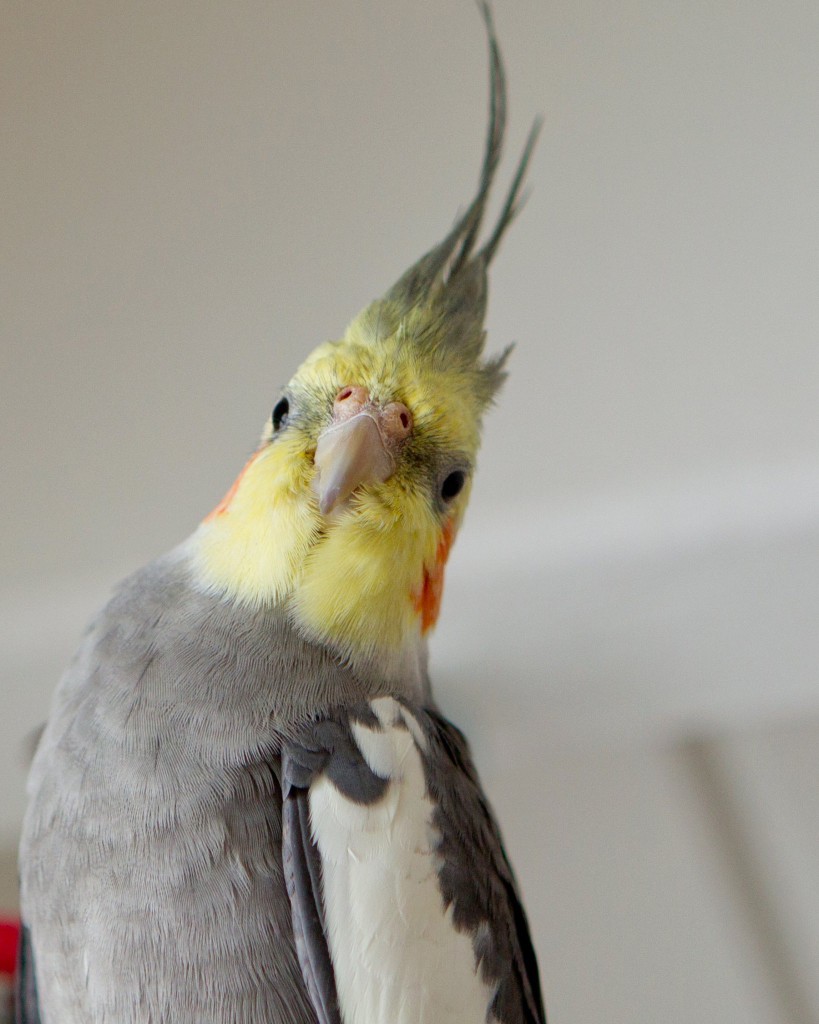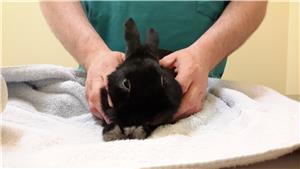Lost Birds, Rabbits, Ferrets, Reptiles, etc.
General advice for recovering lost birds, rabbits, ferrets, reptiles, etc.
There are only a few databases online where you can report a lost pet other than a dog or cat. Pet FBI possibly has the most reports for all pets, including pets other than cats and dogs. Every month there are several dozen reports for birds, ferrets, tortoises(!), iguanas, etc. We are pleased to report there have been a surprising number of happy reunions through our database. So, whatever else you do, take a moment to search the found reports and post your own lost report with full details.
In terms of disseminating information about your lost pet you can follow the general advice for cats and dogs.
For specific tips and tricks to recover lost pets of your pet's species we recommend that you use an internet search engine with keywords like: "I lost my bird" or "My iguana is missing", etc. There are surprisingly many websites dedicated to recovering lost pets of a particular species.

Phil was successfully reunited when he alighted on the shoulder of a Columbus Ohio resident who found his lost report on the Pet FBI database.
12 Steps to Take to Recover a Lost Pet
1 . Search every nook and cranny

Search every nook and cranny of your house and grounds on the chance that your pet has become caught or trapped or is sick or injured and hiding. Do not assume they will come to you. Look in closets, drawers, air ducts, behind appliances, under beds, in the hollow under reclining chairs, behind books in a bookcase, wrapped in the bottom of drapes, in any hidden recesses, basement crawl spaces, in sheds, garages, under decks, in pipes and culverts, dumpsters, garbage cans, in trees, on rooftops, etc.
2. Contact your local animal control agency or the police.

This Sulcata tortoise was found by a motorist on the side of the road. He took it to a pet shop many miles away. Pet shop owner checked Pet FBI database and there was a happy reunion. BTW – when picked up, he was a whole mile away from home!
Often this is the first place people call when they have found a stray pet in their neighborhood. Ask that they keep a written record of your lost pet.
3. Comb the neighborhood on foot and by car as soon as possible and keep looking.
Call your pet by name or make some familiar and attractive noise, like whistling, squeezing a squeak toy or shaking a can of treats. Remember that a frightened or injured animal will hide and may not come to you. Pause often and listen for your pet. Look under porches, behind bushes, under cars, etc. Ask neighbors for permission to look in their yards.
If you live in a busy urban neighborhood, the best time to look and call is early morning and late evening when there is not much activity. Take along a photograph of your pet to show neighbors and people who know the area: letter carriers, meter readers, school bus drivers, joggers, neighborhood children. Hand out cards or flyers with information on how to contact you. . Go out after dark with a flashlight. Shine the flashlight into all hidden recesses and look for a reflection from the eyes.
4. Create and post flyers
Include a picture and description of the animal, date lost, and how to contact you. This is one of the most successful techniques. Be sure the letters are large and easily visible from a passing car. For your convenience, we have prepared a flyer template. You can click on this link, key in your information and it will automatically format a printable flyer. Have copies of your flyer made on light, bright colored paper. Include a photo if possible.In addition to printing and posting as many flyers as is practical, we recommend that you make a few special posters to use in the most strategic places. Mount some of your flyers on fluorescent poster board. Use an indelible marker to write LOST BIRD / FERRET, etc. and put sheet protectors on your flyer. Post the flyers in conspicuous places like utility poles, intersections, nearby schools, laundromats, community bulletin boards, vets offices, etc.
Most lost pets are found fairly close to home, but birds can turn up miles away, so it is equally important to post the flyers at some major intersections in other parts of town. You can’t post too many flyers! It is also a good idea to hang your flyers from doorknobs in your neighborhood. Again, distribute them as widely as practical. (Please note that it is not allowed to put anything other than US mail in mailboxes.) One Pet FBI user suggests taking copies of your flyer to the local post office to post by the time clock so the carriers in the area can be aware. This may not be possible at all post offices. Hair salons are also a good place to post and network. Another good tip is to tag your car but be sure to check with the local police to see if there are any restrictions for doing this.
5. Try to attract your pet back to the house.
Use your other pets to leave a scent trail to and from your house. Leave strong scented articles outside like worn clothing or sheets with your scent, your pet’s bedding or mat, or some fragrant food, taking care that other animals don’t eat it. If at all possible and/or safe and practical, leave a window or a door open so your pet can get back in on their own time.
If you suspect your pet is around but not coming to you, a good trick is to sprinkle flour and check for paw prints. If you suspect your pet is around but evading you, you might try setting up a video camera. Once you confirm the pet is around, you can try trapping with a humane trap.
6. Consider setting a humane trap.
Sometimes the only way to capture and elusive pet may be to trap them. Some local humane societies and animal control agencies will lend or rent humane traps. They can also be purchased at pet stores, hardware stores and home centers. Bait with some strong-smelling food. Monitor trap often. If left overnight, do not be surprised if you catch a raccoon, a possum or a skunk!
7. Visit local shelters and humane societies immediately and return regularly.

This stray ferret was found and turned into a shelter. Posted in the Pet FBI database and reclaimed by relieved owner
Animals surrendered to shelters are held for only a very limited time. It is indispensable to visit your local shelters in person to see if your pet has been turned in. Bring a good photograph of your pet to leave with them. but do not depend on the shelter people to contact you. Often, they are just too overwhelmed to research the huge volume of lost and found reports they are asked to deal with. You really need to return to the shelters regularly to look for yourself. We emphasize that you must not assume that because you have left information about your missing pet that you will automatically be contacted if the animal is turned in. In most urban areas, there are simply too many unwanted animals and too few shelter helpers to do this. It is up to you to check back regularly.
For information about how to identify and contact shelters or humane societies in your state or area go to PET FBI’s Whom to Contact page.
8. Call your neighborhood veterinarians and animal emergency clinics.
People often leave lost and found reports with them or bring injured strays to them.
9. Post and keep checking reports on the web
Post and check reports on other internet lost and found sites and social media and keep checking! Craigslist is a well known and widely used for free classified ads. Select your area, then “Community” then “Lost + Found”. The “lost and found” is for everything, not just pets, and the ads are organized by the date they were posted. It is also possible to see a map with pins indicating the location of lost or found pets if the poster uses that feature. As of this writing, Craigslist ads expire after 45 days but users can renew their ad every 48 hours. It is possible to search by key words like “ lost black cat”, but it may require some persistence to view all the relevant information. However, Craigslist has the advantage of being widely known and used. When using Craigslist to search for a lost pet, you should also check the ads for areas beyond your own, because lost pets often turn up far away.
10. Facebook
In many areas, Facebook pages dedicated to lost and found pets have sprung up. Use your browser’s search engine to find them as well as other lost and found sites. (use keywords “lost and found pets + your area”.) You can also use the Facebook search box and do a more specific search like "Found parrot Atlanta". The disadvantage of using Facebook is that first you must be a registered Facebook user to post or to search. To avoid the bother of setting up your own Facebook account, you can always ask a neighbor’s kid or practically any young person to help with Facebook.
Moreover, posts are not selectively searchable. You have to plow though all the posts looking for the information you need. This is the advantage of using a well designed database like Pet FBI's.
11. Place a classified ad...
...in your local newspapers and check the “found” ads. Keep checking regularly for new ads, and ask how to research ads that have run previously by calling the paper. Also check adoption ads, on the chance that the person who found your pet was unable to trace you, could not keep the pet and did not want to surrender it to a shelter
12. Check with animal control businesses.
As a last resort, you might ask whether your pet has been trapped by one of the companies that set out live traps to catch strays or wild animals who are creating a nuisance. You may have to face the possibility that your pet was killed by a car. Your local police or animal control should be able to tell you who has the grim responsibility of picking up dead animals.


Do Not Give Up Too Soon!
Sometimes it takes many weeks or months before a missing pet “surfaces” and someone tries to trace it. The Pet FBI database may be the only source of information left at that point. Reports on the Pet FBI database are searchable for up to five years.
When you have finished reading this section, be sure to check the “Found” reports on this web site. And, of course, submit a “Lost” report if you have not already done so. Once you have submitted a report it will be uploaded instantly and – unlike almost all other web site classifieds and databases, your report will be not expire for at least four years, or until you inactivate it. Best of all, you will receive automatic Alerts about potential matching reports for 90 days. Of course, you can opt out, but this feature saves you the bother of doing regular manual searches
In a perfect world there would be a single centralized registry to pool information from all sources about lost and found animals. PET FBI is designed to serve this purpose. But it is not a perfect world and lost and found pet reports are scattered everywhere. It is up to you to pursue all sources of information.